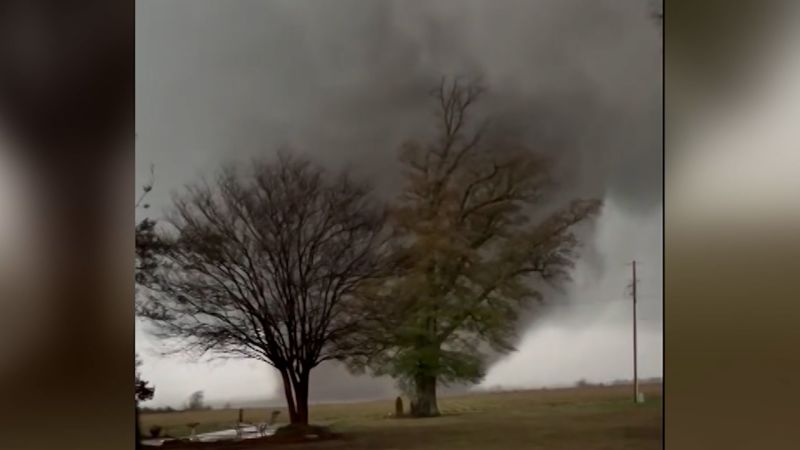
Jacob Carstens, Assistant Professor of Atmospheric Sciences at the University of North Dakota, joins LiveNOW's Austin Westfall to break down a busy hurricane season. About 100 names of tropical storms and hurricanes have been retired from future use in the Atlantic Ocean, and now Beryl, Helene and Milton join them. The World Meteorological Organization maintains lists of names that rotate every six years , meaning a name could be reused when the list it is on comes around again.
Retiring a name from a list is usually done when a storm is highly impactful. This means it will never be used to name a storm again. Beryl, Helene and Milton will be replaced by Brianna, Holly and Miguel when the 2024 list is reused in 2030.

The retired 2024 names join the names of historic storms that were shelved in the past, such as Harvey , Ian , Katrina , Michael and Sandy . Here’s a closer look at the 2024 storms that warranted retirement. Hurricane-force winds have been reported across Texas as Beryl makes landfall.
FOX Weather's Britta Merwin joined LiveNOW from FOX's Josh Breslow from Surfside Beach, Texas. Hurricane Beryl slammed into Texas on July 8, 2024, as a Category 1 storm, moving over the heart of the Houston metro and causing extensive damage and power outages along the way. The storm spawned at least 65 tornadoes across the U.
S., including a deadly one near an Air Force base in Louisiana . Before its U.
S. landfall, however, a much stronger Beryl wreaked havoc in the Caribbean . It hit the Windward Islands as a Category 4 hurricane and weakened as it moved across Jamaica, the Cayman Islands and Mexico's Yucatán Peninsula.
According to a report by the National Hurricane Center (NHC), at least 68 people were killed by the storm, with 14 of those deaths occurring in the U.S. Beryl became the earliest Category 5 hurricane on record in the Atlantic on July 2, when its maximum sustained winds reached 165 mph.
Taylor Schenker has found hundreds of family photos that had been swept away during the historic flooding of the Swannanoa River during Hurricane Helen. Hurricane Helene was the strongest of the five storms that made landfall in the U.S.
in 2024. It hit Florida ’s Big Bend region Sept. 27 as a Category 4 storm, making it the strongest landfalling hurricane in that region since reliable records began in 1900.
However, the damage to Florida was quickly overshadowed by the catastrophic flooding Helene brought to western North Carolina and eastern Tennessee . As much as 30 inches of rain was reported in parts of North Carolina, while more than a foot of rain was reported in parts of Tennessee. Volunteers work to remove debris and mud from flooded a home on Edwards Avenue in Beacon Village neighborhood after a catastrophic flooding caused from Hurricane Helene caused the Swannanoa river to swell to record levels October 5, 2024 in Swannanoa The result was entire towns being washed away and widespread death.
According to an NHC report , Helene is blamed for 249 deaths across the U.S. with 106 of those happening in North Carolina alone.
Recovery from the storm is just beginning and will take years to complete. Aftermath of Hurricane Milton is still being felt across the sunshine state. FOX News reporter Bowen Kedrowicz joins LiveNOW from FOX to share recovery efforts underway in St.
Pete Beach, FL. Hurricane Milton rapidly intensified as it moved across the Gulf, eventually reaching Category 5 strength. It weakened to a Category 3 hurricane with 120-mph winds by the time it made landfall just south of Sarasota , Florida, the night of Oct.
9. Milton caused significant damage as it moved across the Florida Peninsula, including to Tropicana Field , the home stadium of the Tampa Bay Rays. The hurricane also stirred up a tornado outbreak in Florida.
The National Weather Service office in Miami broke its record for the most Tornado Warnings issued in one day, with a total of 55. At least 23 deaths in Florida have been blamed on Milton. The WMO also retired the name John from the list of hurricane names used in the Pacific Ocean.
It will be replaced with Jake. Hurricane John slammed into the southern coast of Mexico in September as a powerful Category 3 storm with 120 mph winds. It underwent rapid intensification as it hovered off the coast, going from a tropical storm to a major hurricane in just 21 hours.
The slow-moving storm also resulted in devastating mudslides that left homes in shambles and some roads impassable. Nearly 30 people were killed in the storm. Read more of this story from FOX Weather.
.















